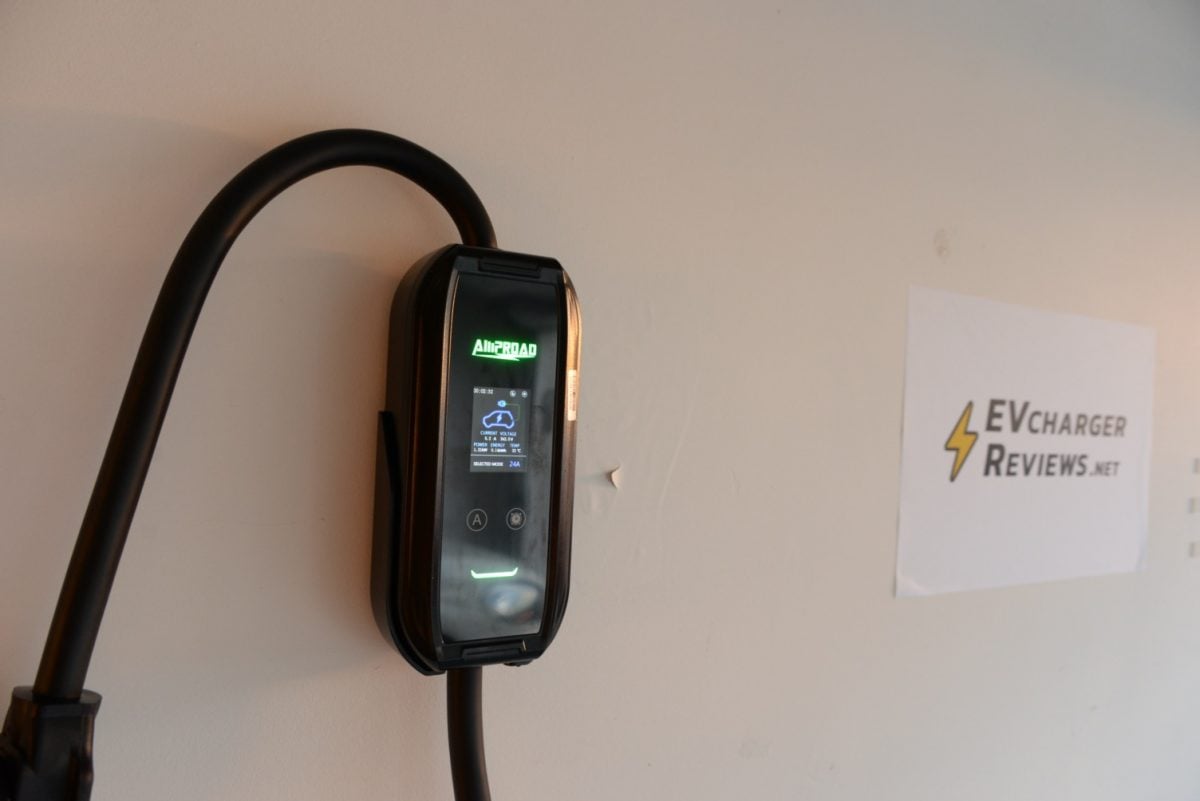While reviewing the iFlow P9 from AMPROAD, we were debating whether it is more of a home based EV charger or a portable one. That is because this product has qualities of both categories, and it is surprisingly versatile given the price point. There are portable chargers built well enough to serve as full time home based chargers, but after two weeks of testing we’ve decided that the iFlow P9 is more of a home based charger with portability. Read on to find out why.
Our Rating: 4/5
Packaging and Unboxing
The iFlow P9 arrives in a shipping cardboard box that contains the retail packaging box within. Inside that box, is the travel carrying case with the chargers neatly tucked inside. The chances of this product being damaged in transit are minimal, and the round carrying case is functional and attractive. The carrying case adds portability points to this product, and looks like it can withstand constant use.
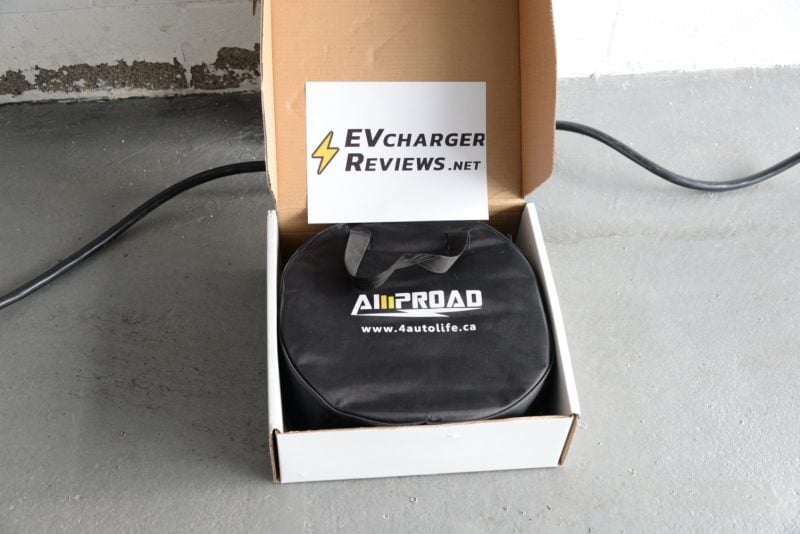
Hardware Overview
The charging unit is larger and heavier than most other portable chargers, but it also feels solid and well built. The body is 2 by 9.5 by 4 inches, and dwarfs chargers like the Tesla Mobile connector in comparison. The cord feels equally solid (more on this later), with a ticker gauge used than competing products.
The unit has an IP67 water tightness rating, meaning it is rain and splash-proof, but should not be submerged in water.
Unlike most other portable EV chargers, the iFlow P9 comes with a strong plastic wall mounting bracket, as well as a decent cord holder. The bracket is a single piece plastic design with four screw holes. It feels solid enough to stand up to wear and tear, and the charging brick slides into place from the top. These features really give AMPROAD more credibility towards being a full time home EV charger.
The entire charging cord is 25 feet end to end, and there is about a foot and a half of cord between the NEMA 14-50 plug and the main charging brick. This is perhaps one of few complaints about this design; the NEMA 14-50 end comes out of the top of the brick like most portable charger designs. Home chargers typically have both cords stick out of the bottom. So depending on the height of your wall outlet you may need to mount your AMPROAD wall bracket lower on the wall, or alternatively have an outlet installed higher on the wall like in AMPROAD’s marketing materials.
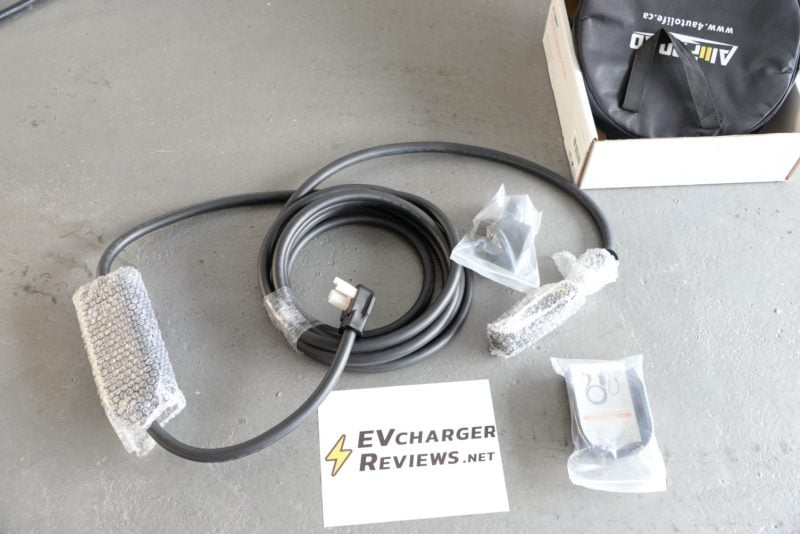
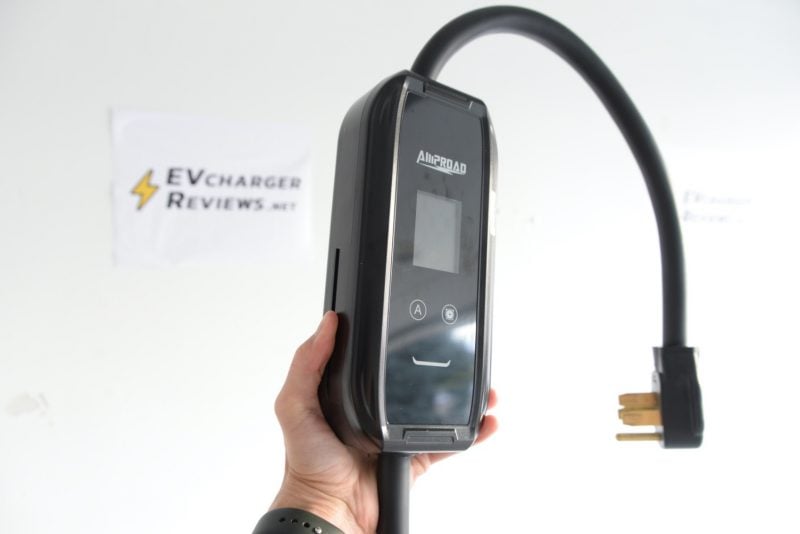
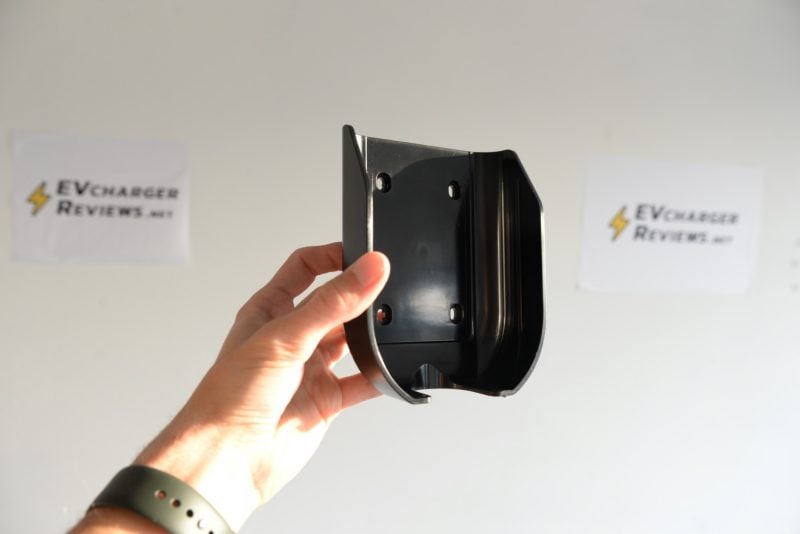
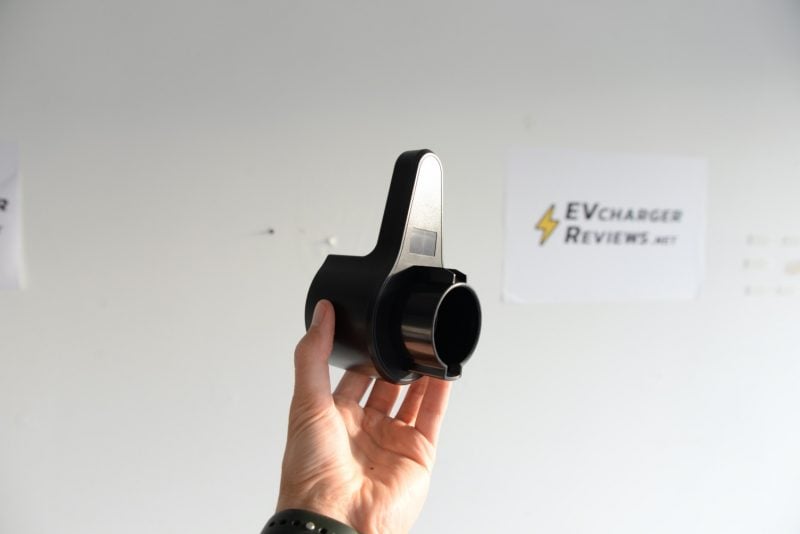
Specification Summary
| Spec | AMPROAD iFlow P9 | Vs. Competitors |
| Charging Level | Level 2 (240v) Level 1 (120v) possible with separate adapter | Level 2 (240v) |
| Max Amps | 40 A | 24-40 A is typical |
| Lowest Amp Setting | 10 A | 16-32 A |
| Cord Length | 25 feet | 20-25 feet |
| Charging Connector | J1772 | J1772 is standard |
| Wall Connector | NEMA 14-50 | NEMA 14-50 is most common |
| Connectivity | Wi-fi, no app | N/A |
| Warranty | 1 year | 1 year |
Charging Cord and J1772 Connector
Like mentioned earlier, the thickness of this cord is more in line with home EV chargers than portable units. It feels like it can withstand daily use, but the extra thickness does not appear to negatively affect pliability. We were able to wrap this cord easily to insert into the carrying case. The extra materials used in the cord must also help keep temperatures down; the thin cord of the Tesla Mobile Connector becomes a little warm to the touch when pulling 32 amps for a while, but the AMPROAD stays noticeably cooler under similar loads.
The J1772 connector here is pretty typical, but includes AMPROAD branding painted on the site. We used a Tesla for this test, and had no issues with fitment or compatibility with the Tesla/J1772 adapter. The release trigger is clicky, and the connector comes with a rubber cap for storage.
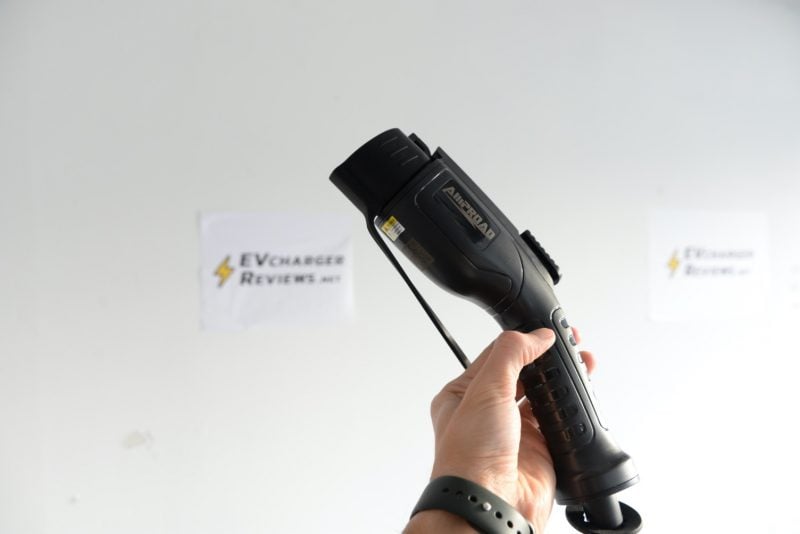
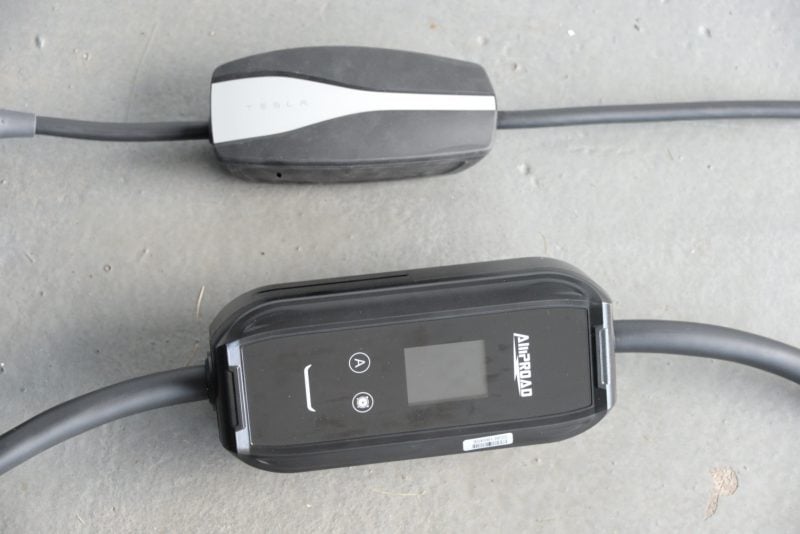
Display Screen and Charging
The iFlow P9 includes a useful display with charging metrics, status indicator lights, and two soft-touch buttons.
The LCD display provides real time metrics such as: amperage mode, live amps, voltage, energy consumed, charger temperature, and power in kW. This is one of the clearest displays we have seen on any EV chargers. The dual LED status indicators are pulsating green during charging sessions and are very clear to read.
The AMPROAD charger supports five charging modes, ranging from 40 amps all the way down to 10 amps. This is a great safety feature, especially for portable chargers. Once we configured the charger to the 32 amp mode, it was communicating that maximum amperage limit to the vehicle.
Communication between the AMPROAD and our Tesla test vehicle was always fast and seamless. We didn’t encounter any error messages on the charger or in the car. Temperatures were also kept in check, the highest temperature we recorded was 113 degrees F (45 C), while in 32 amp mode for an extended charge cycle. We suspect the larger enclosure and thicker cable help keep temperatures cooler compared to other 32/40 amp portable EV chargers.
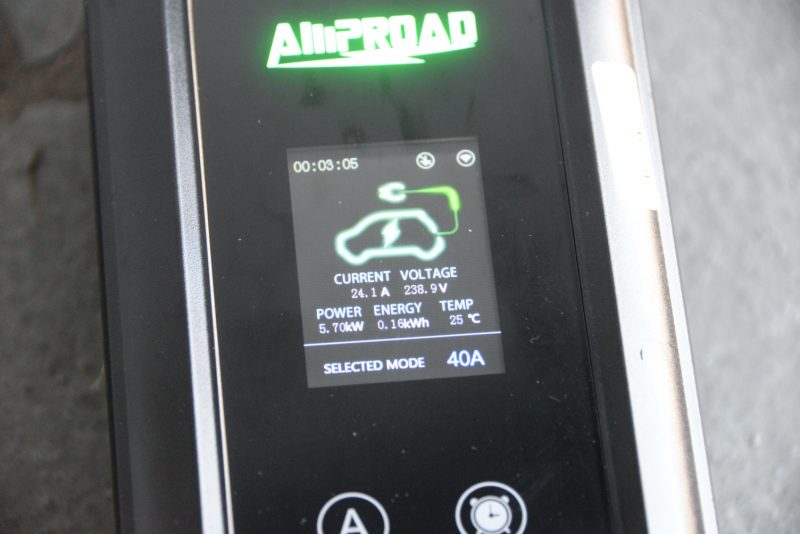
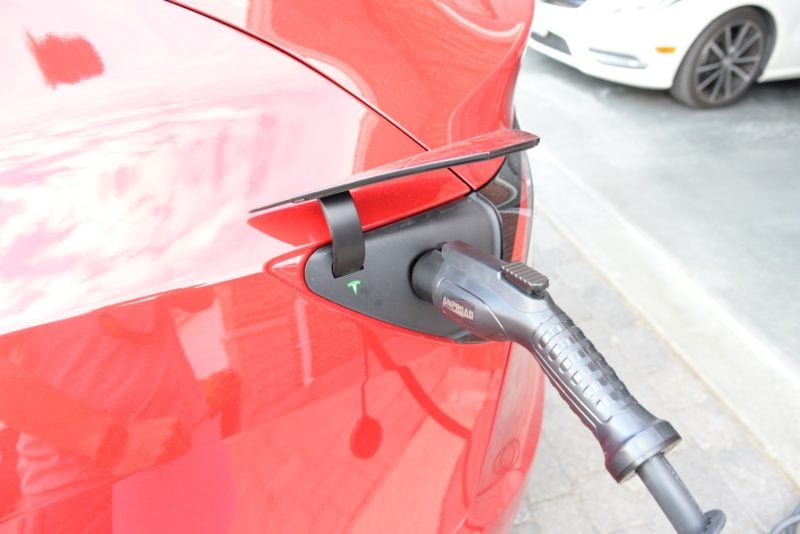
Connectivity and Software
The AMPROAD EV charger includes wi-fi connectivity, but it does not connect to the internet or have any mobile applications. Instead, the box hosts its own wi-fi network and web page server where the user can access configuration and statistics. If you have ever configured a wi-fi home router, then this concept will be very familiar. The downside to this system is that you have to manually leave your home wi-fi network every time, connect to the AMPROAD network and navigate your web browser to 192.168.4.1.
But don’t let this intimidate non-technical users, because the wi-fi connectivity is completely optional. Some EV chargers we’ve tested required the use of an app for initial setup, but the AMPROAD can be used completely offline as a plug-and-charge cord. The charging statistics and modes are available from the outside interface.
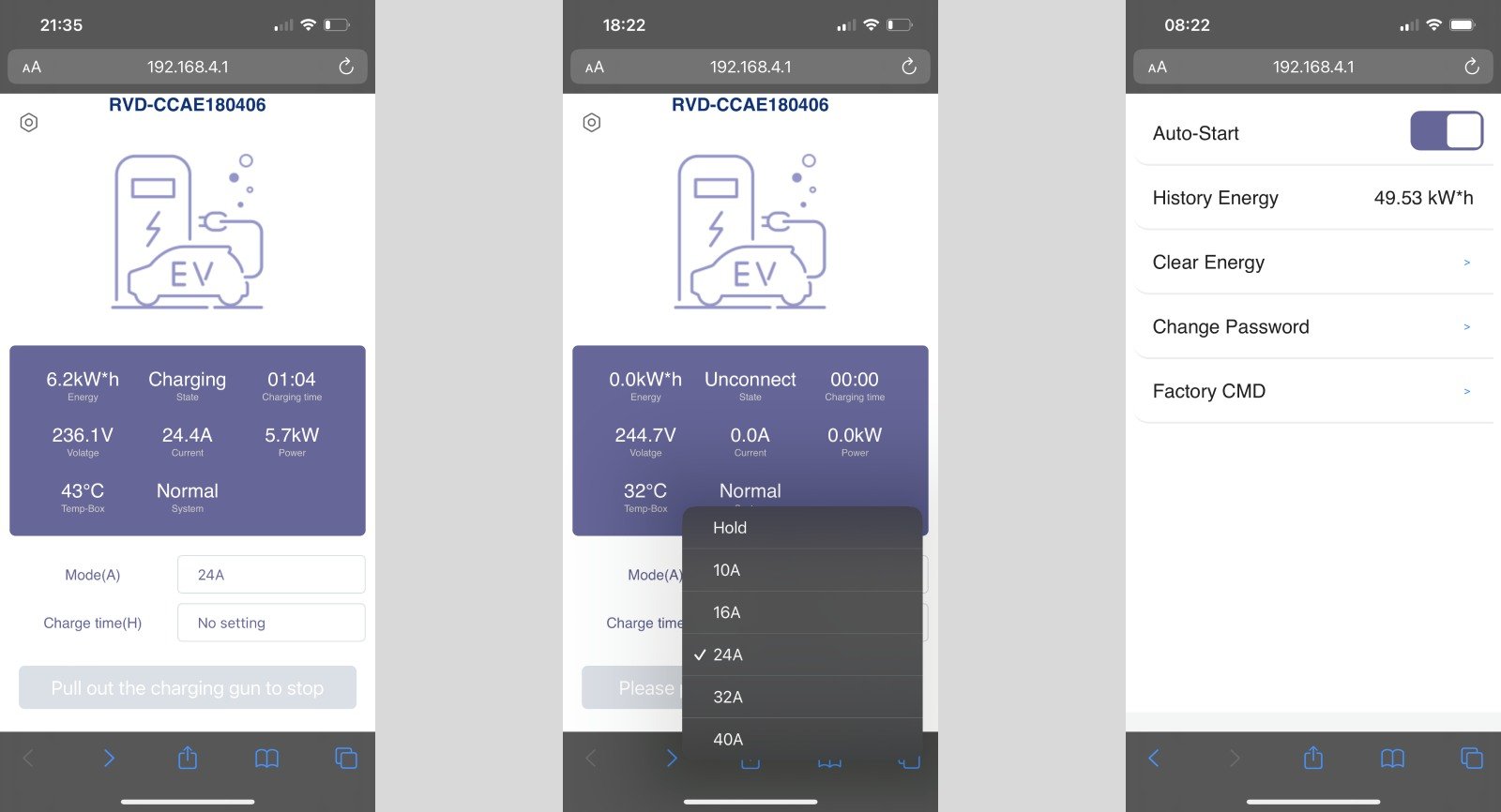
Conclusion
The AMPROAD iFlow P9 has been gaining popularity in recent months, and we can see the appeal. It is a competitively priced 40 amp EV charger with a heavy duty cord and solid construction. This level of durability combined with the included mounting bracket and external cord holder helps us recommend the iFlow P9 as a solid product for a home EV charger that happens to also be easily portable when needed.
We mentioned that the NEMA 14-50 cord placement at the top of the brick could limit your mounting options, but that was only a minor complaint. This product includes many safety features in the spec sheet, but it is not UL Listed at the time of this review. An AMPROAD representative told us that they are in the process of getting UL Listed certification for the iFlow P9, with expected completion later in 2022. We will update this review when that certification is official.
Shopping Options
Full Review Gallery
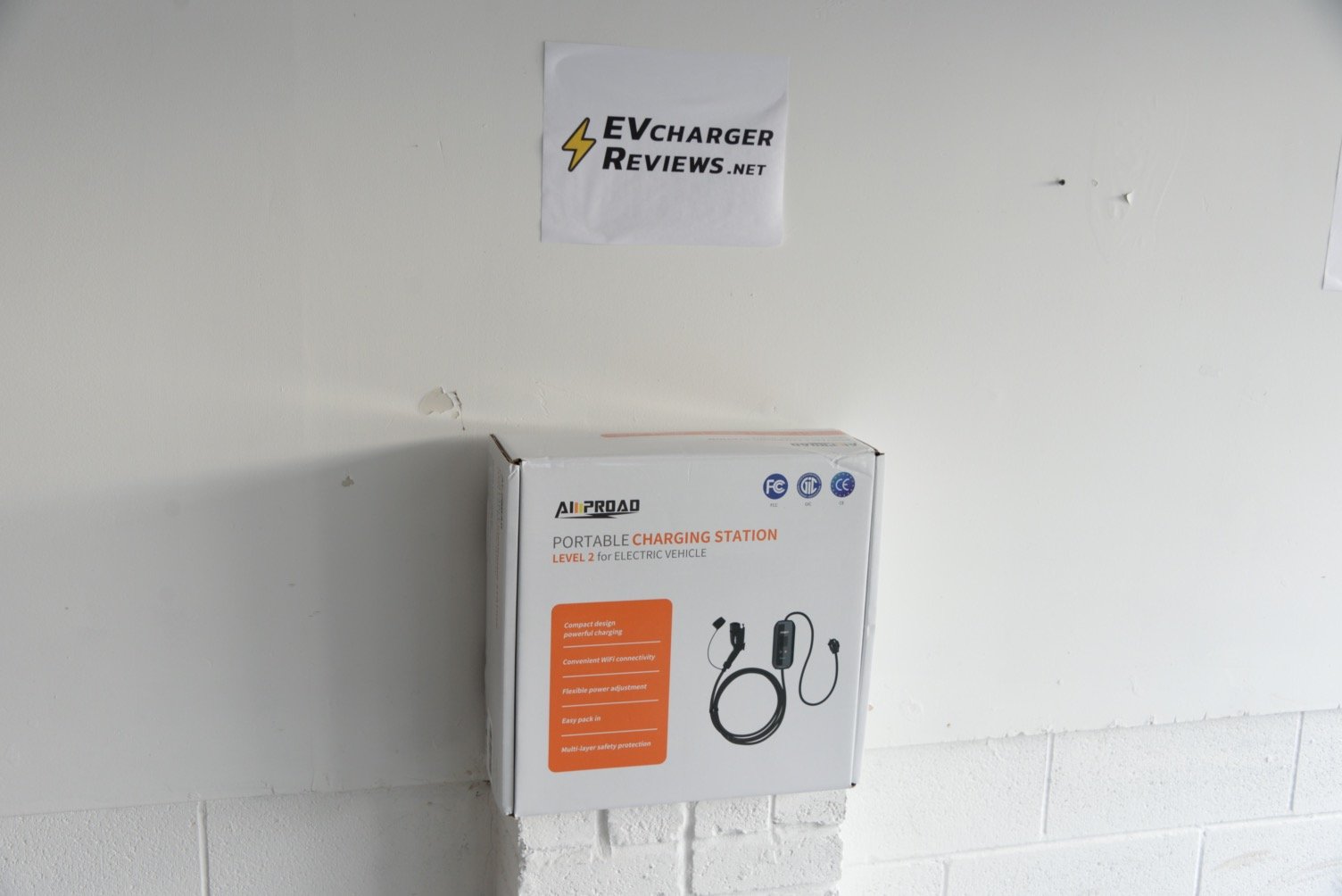
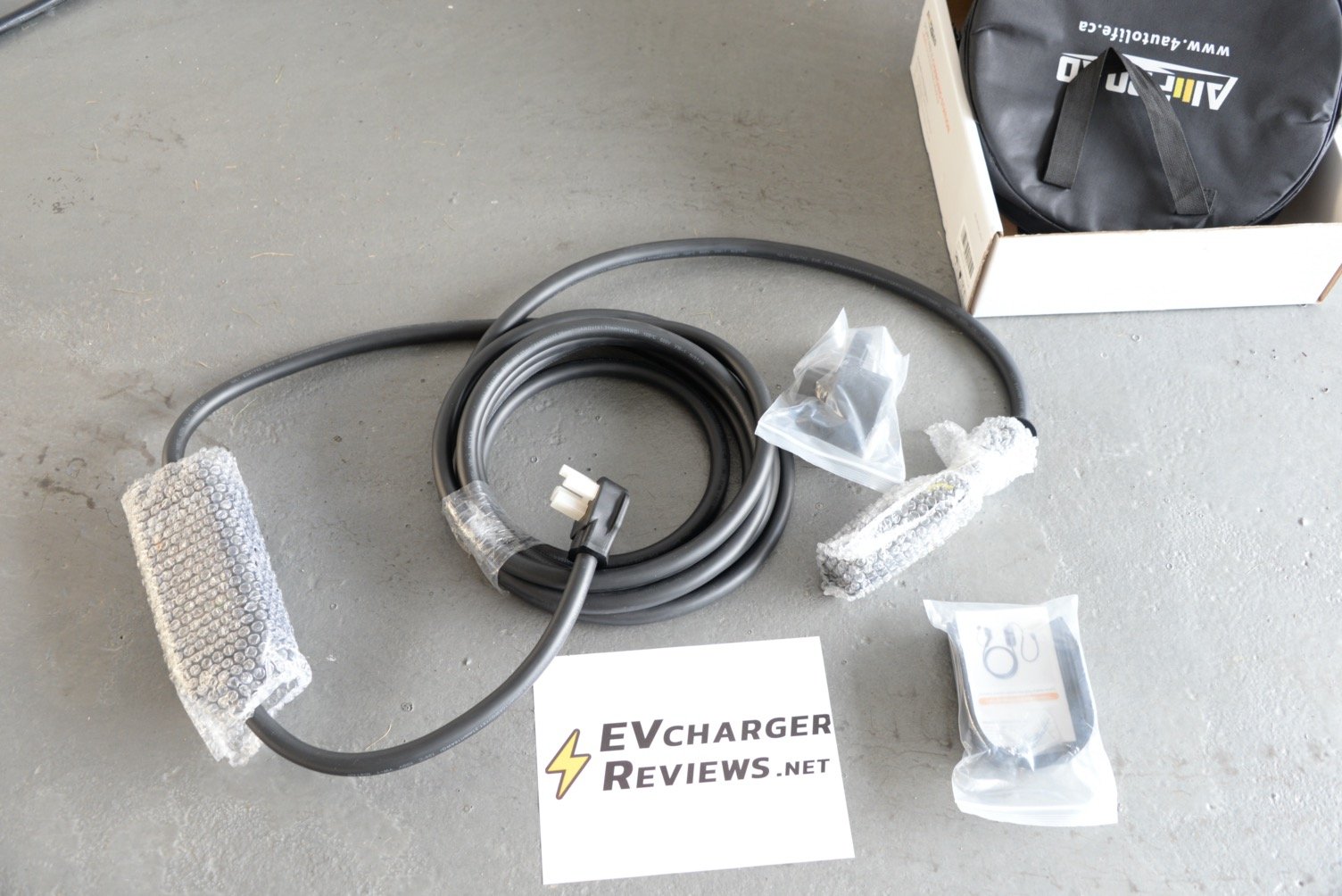
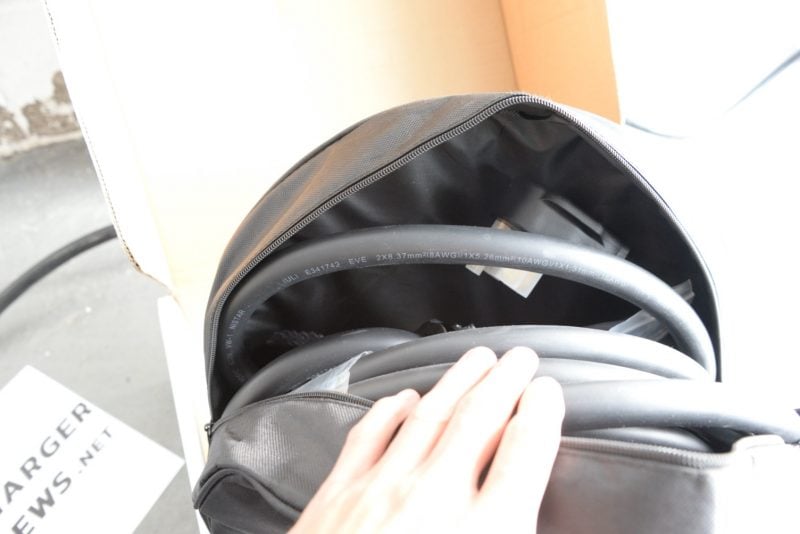
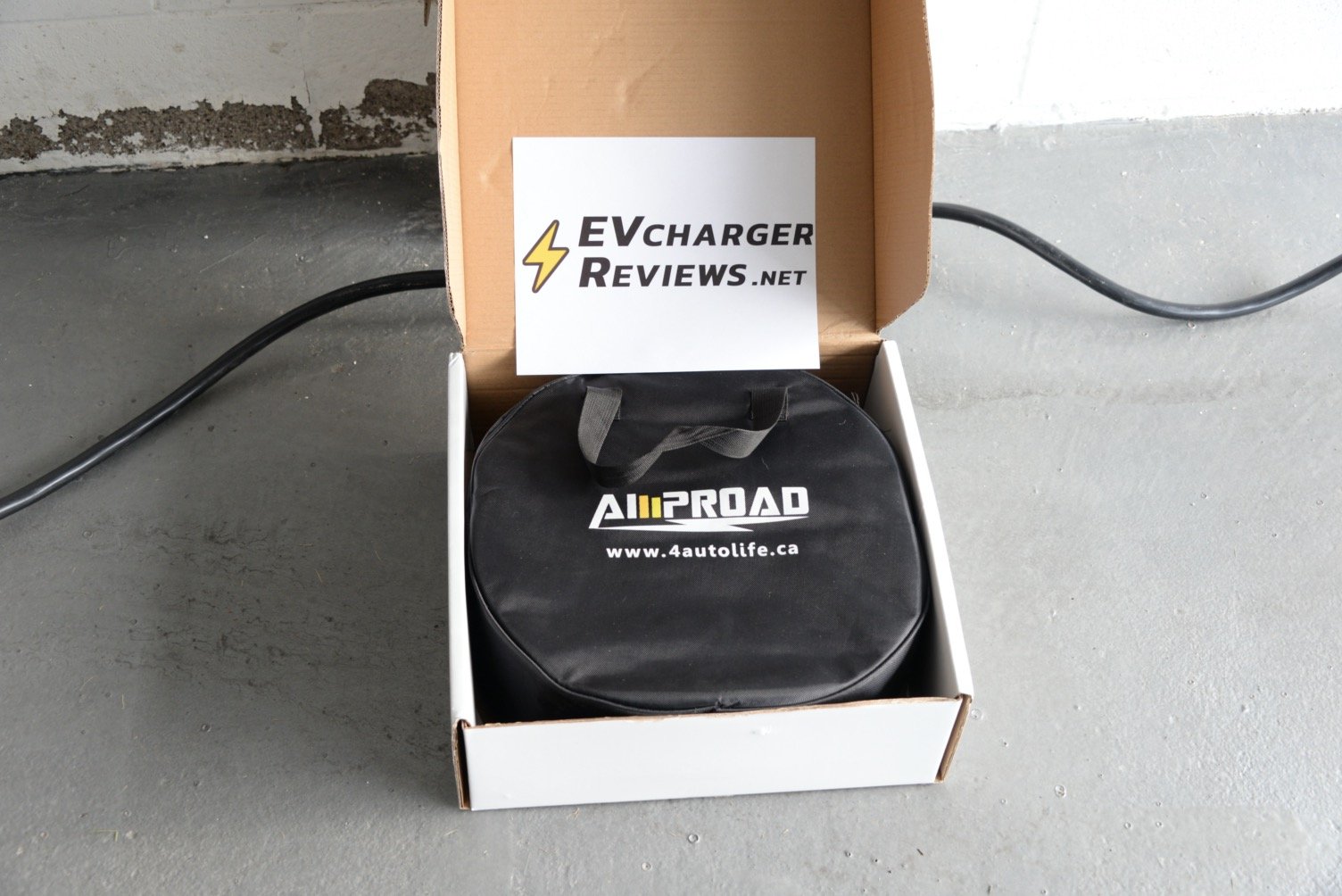
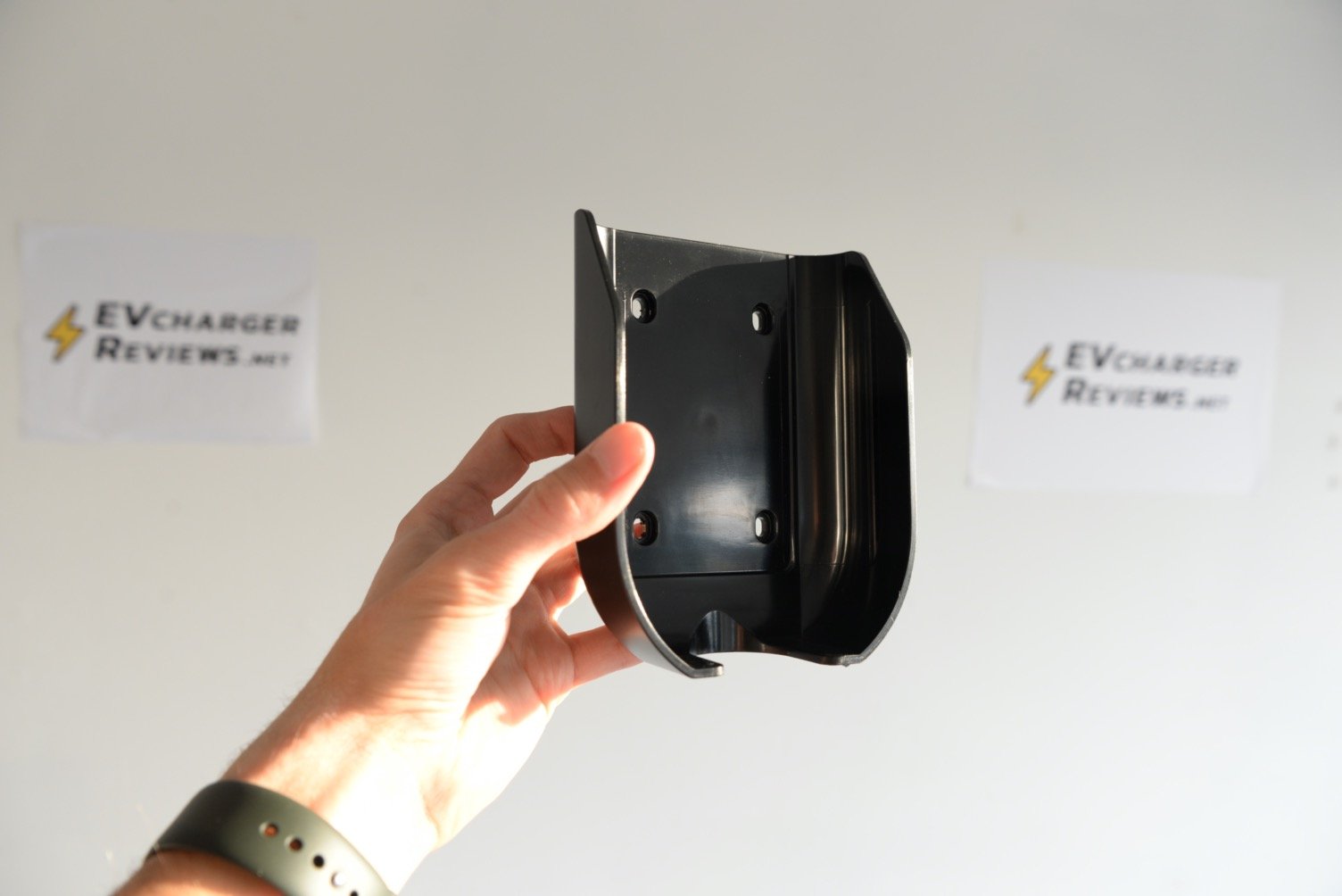
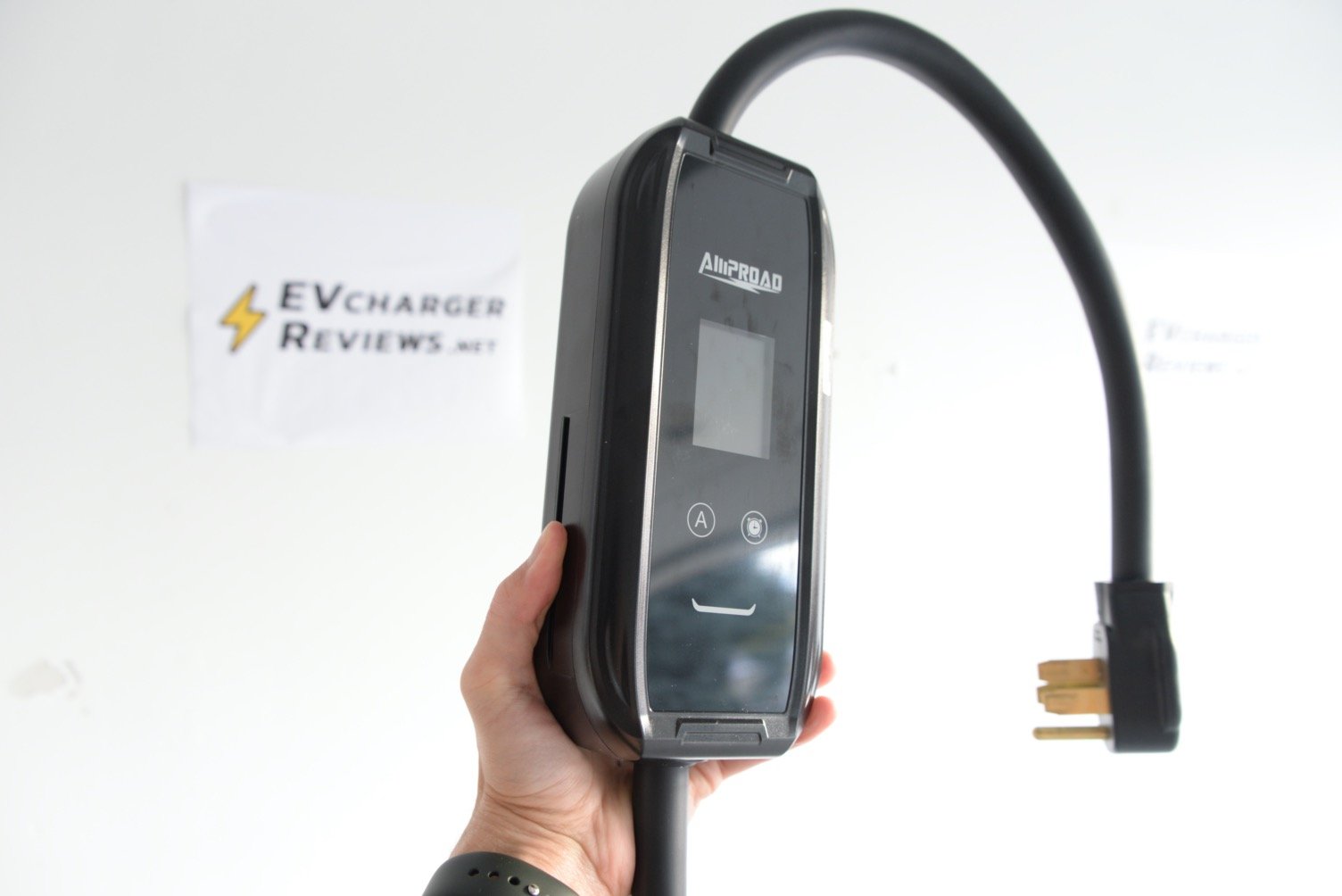
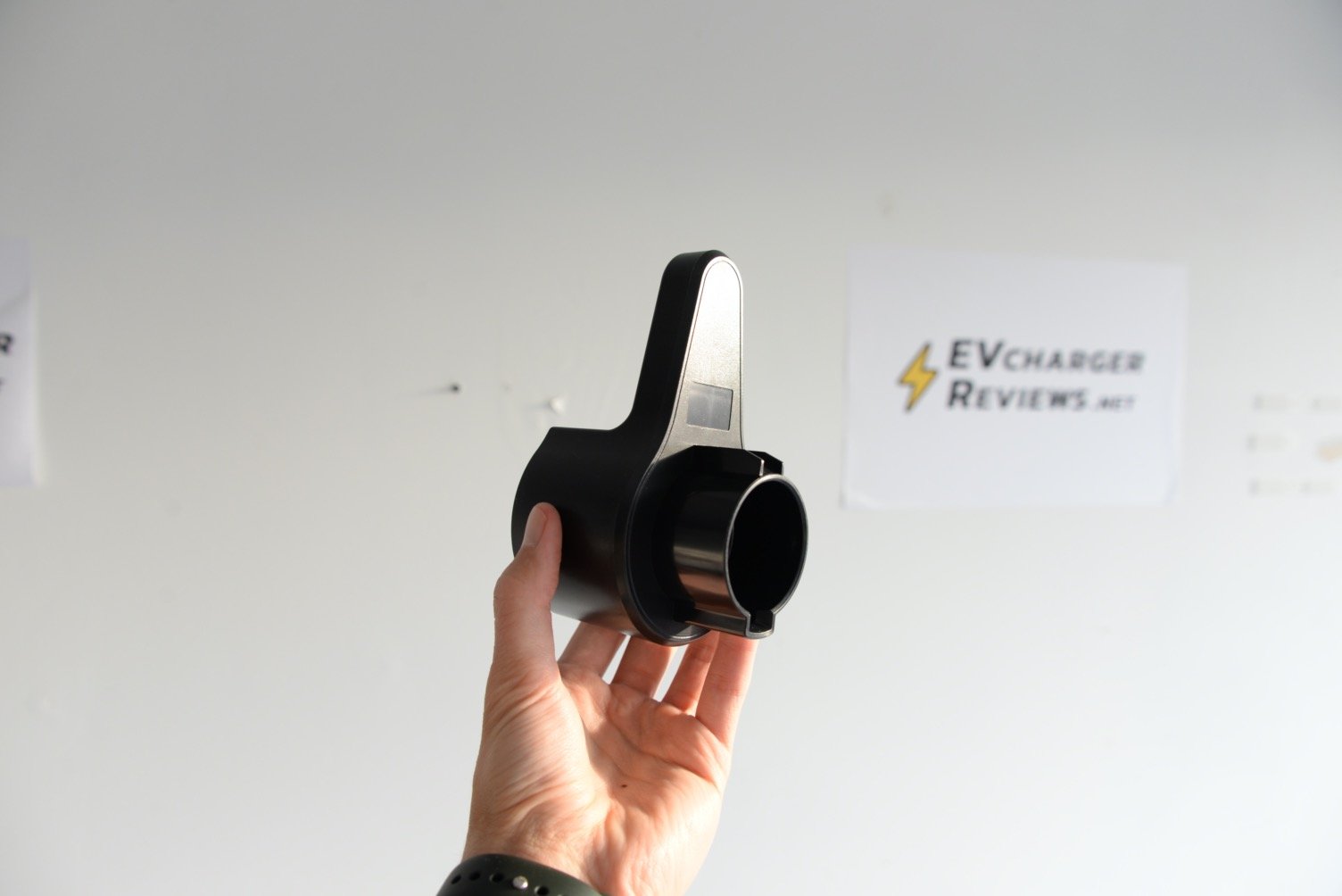
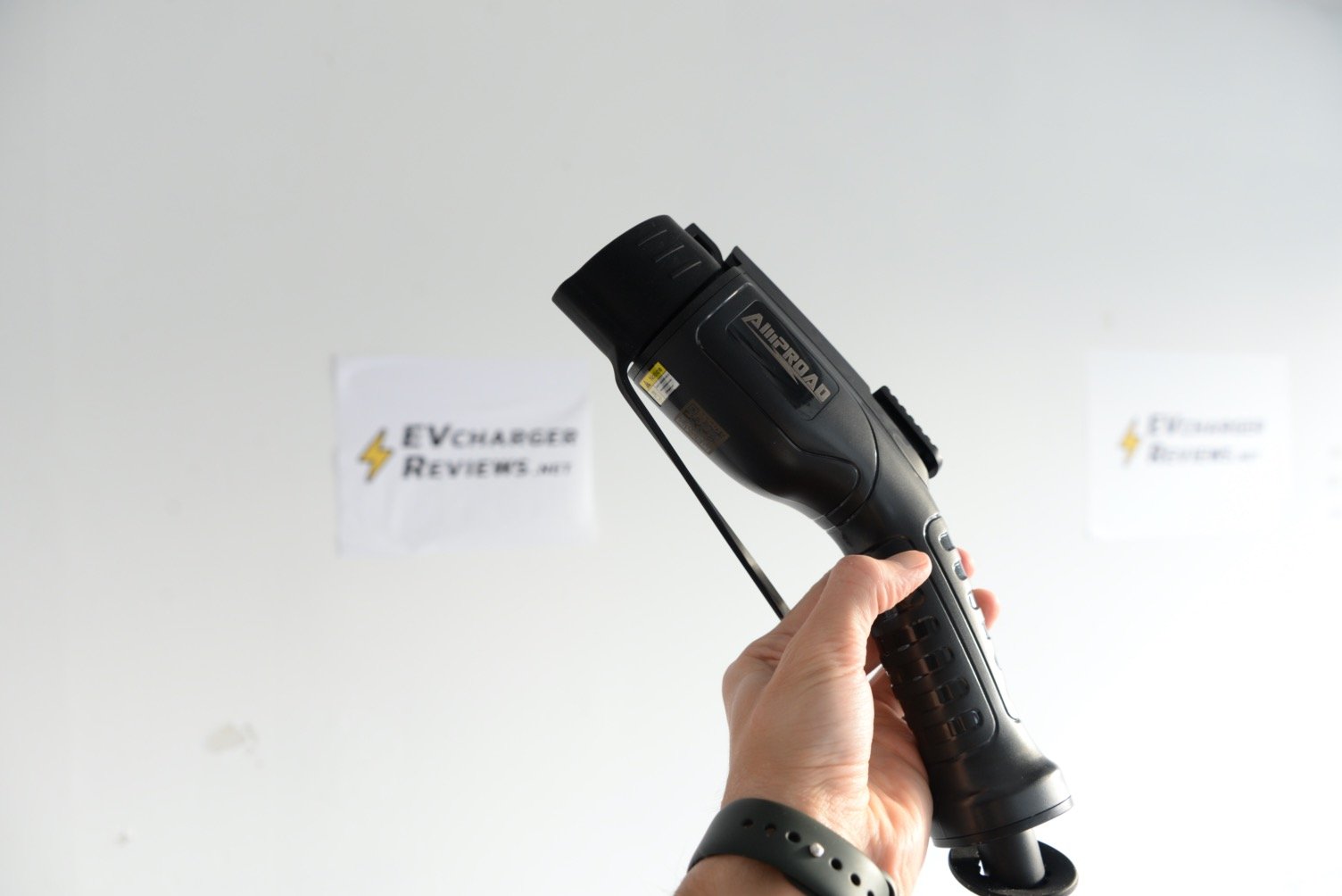
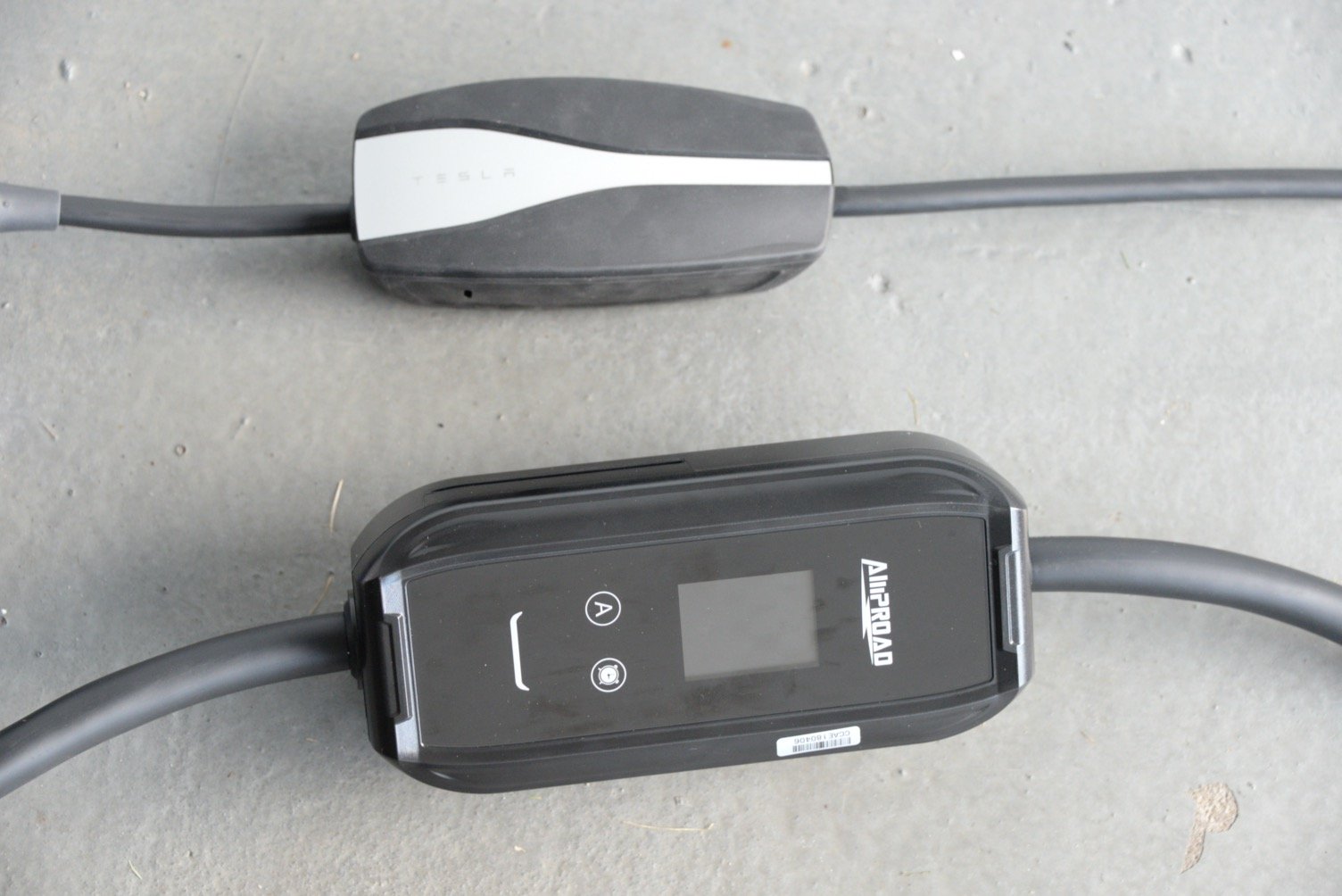
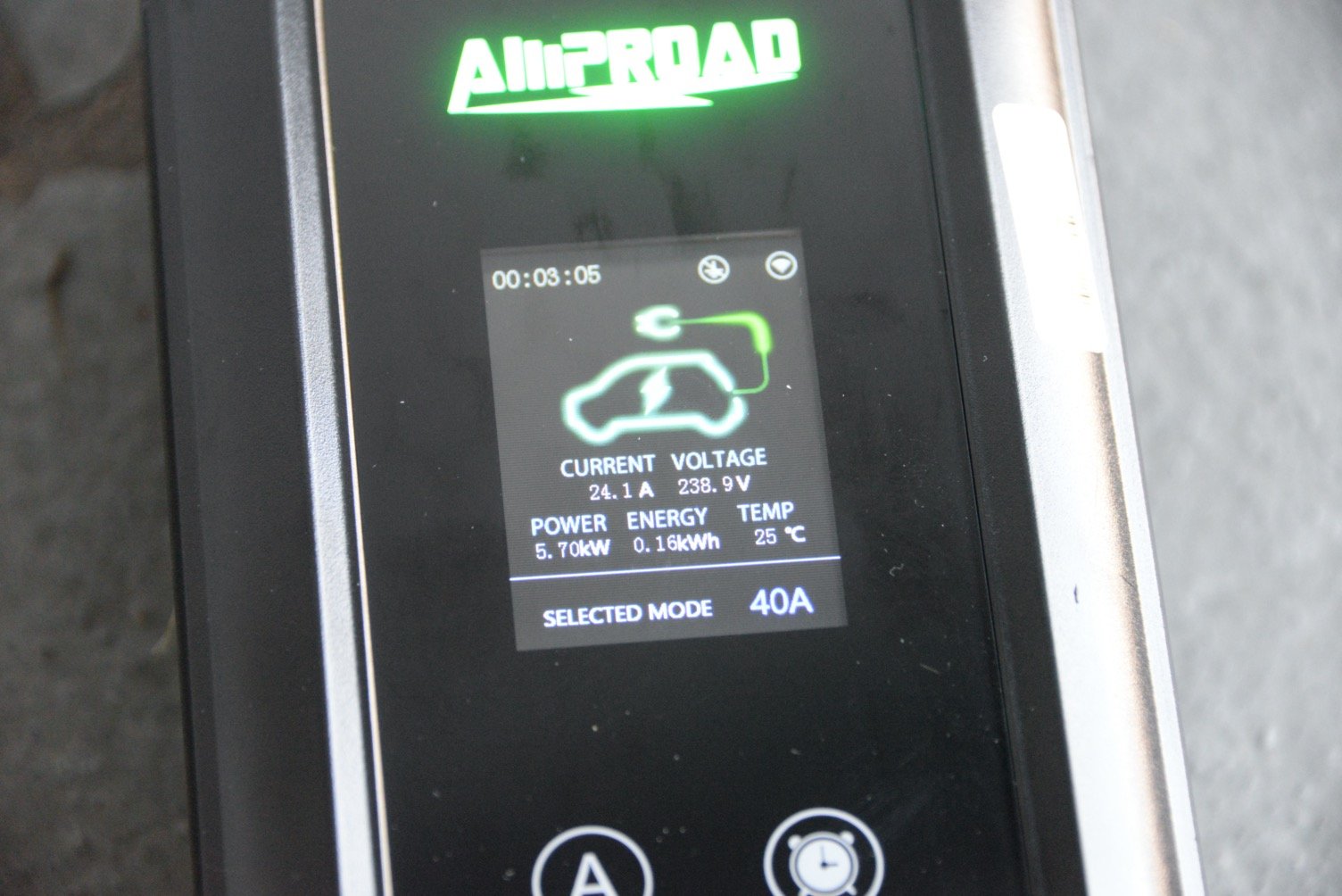
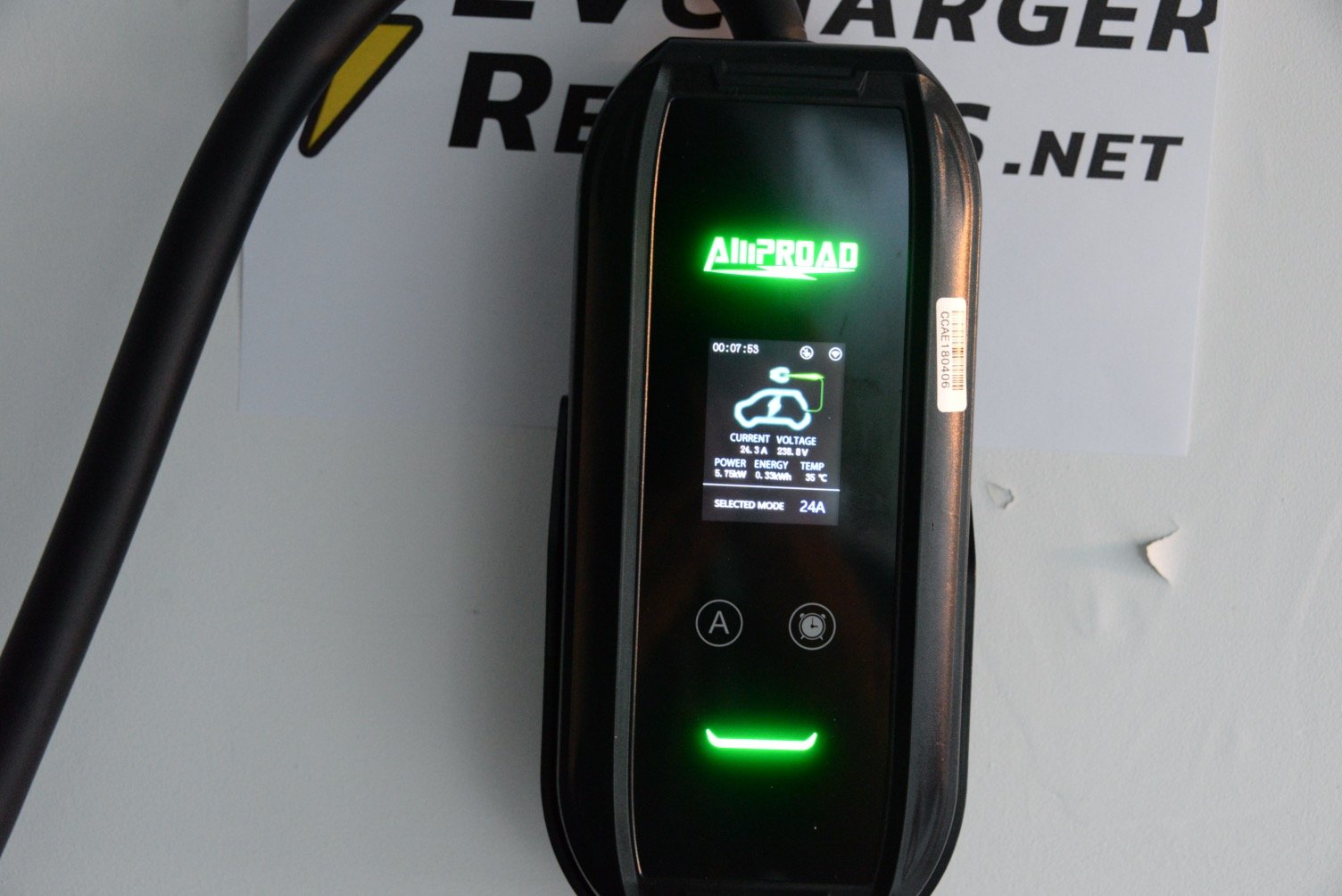
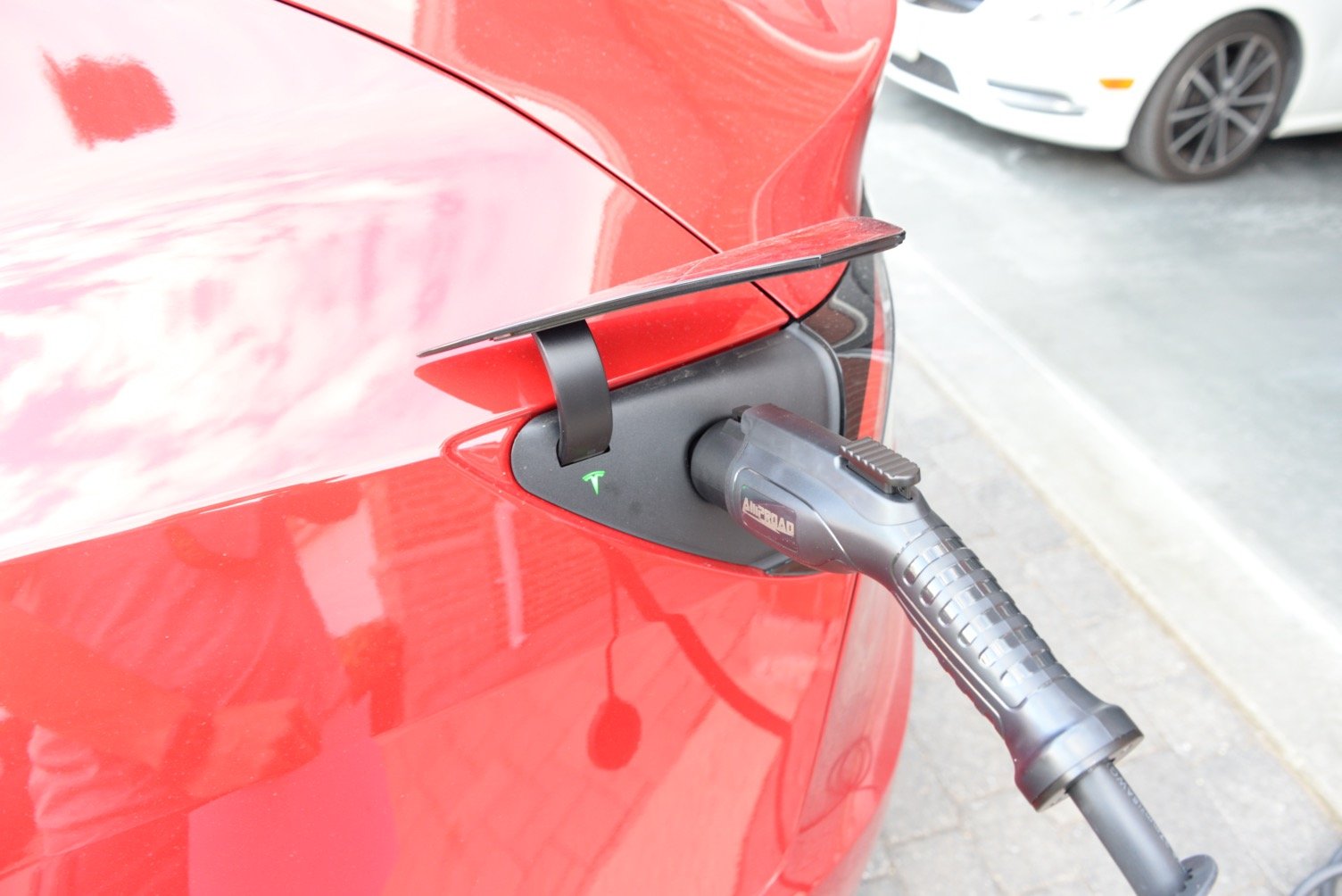
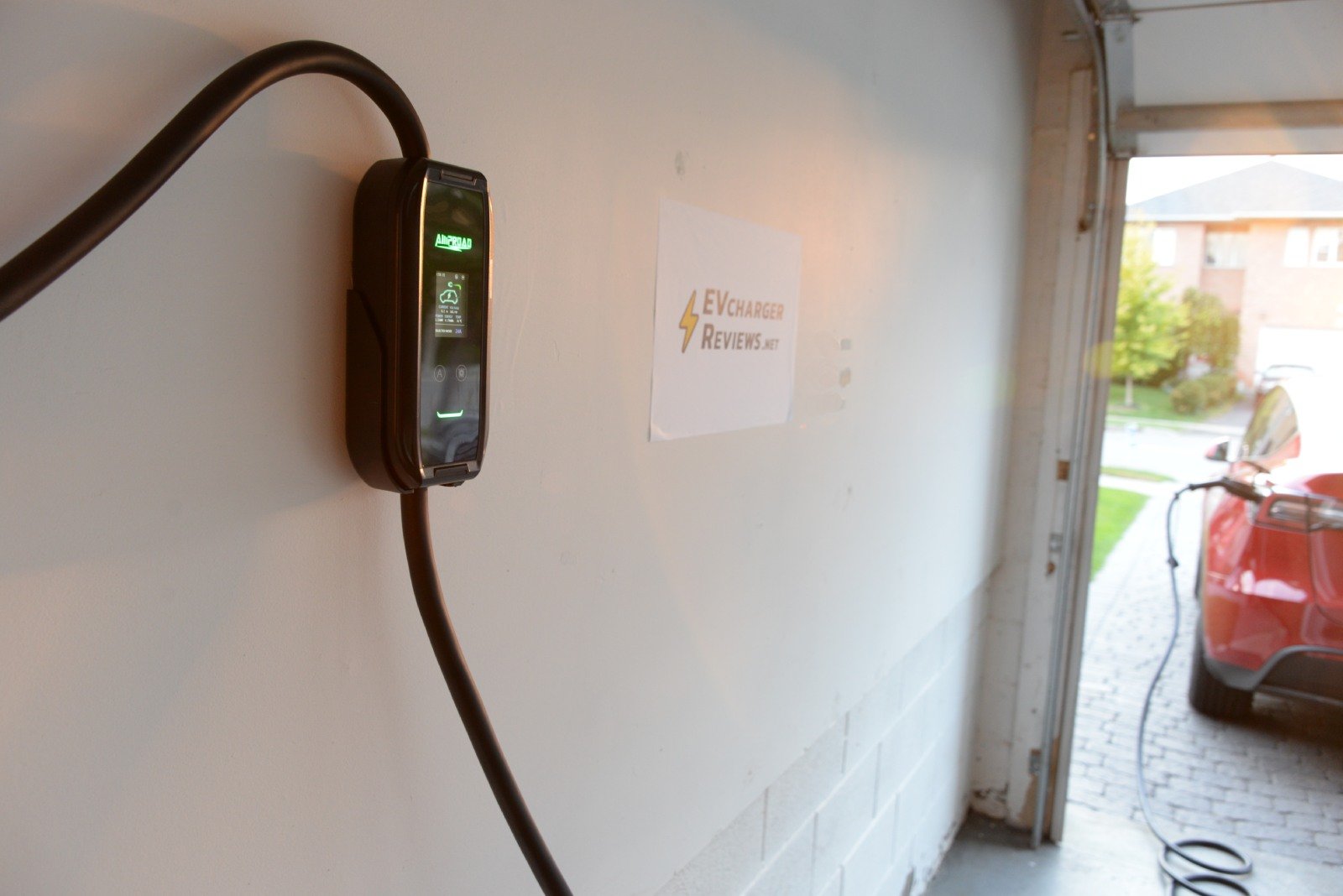
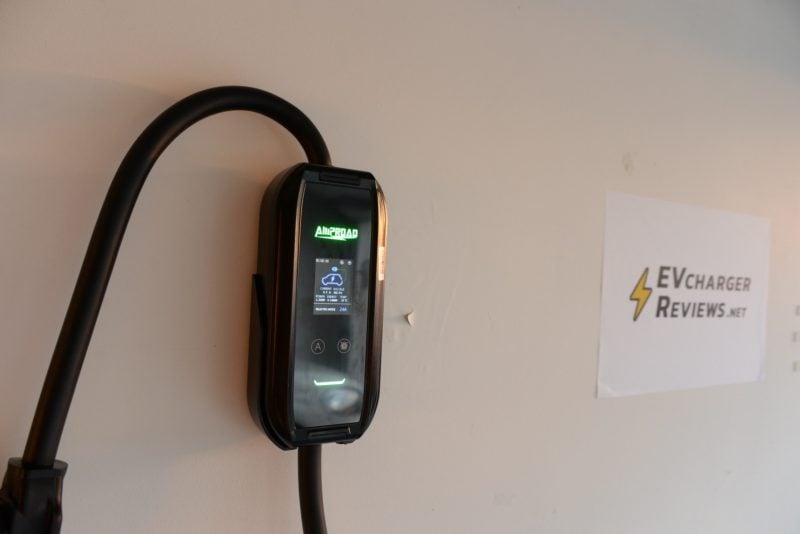
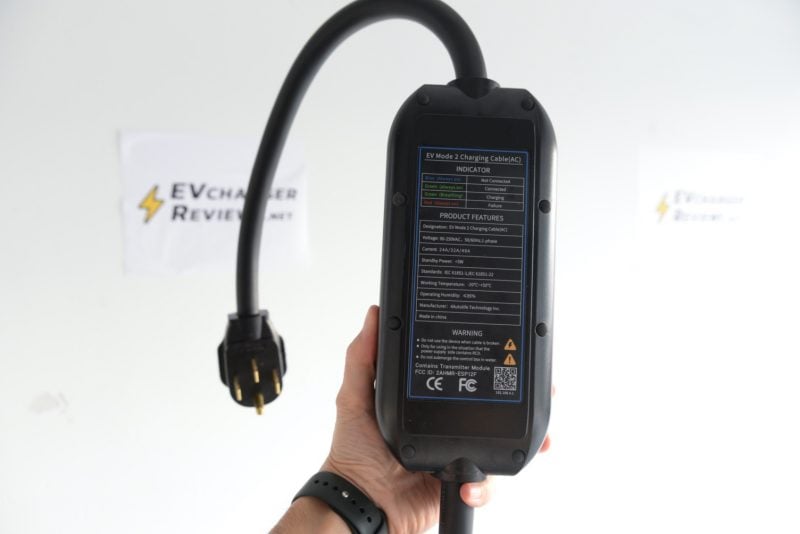
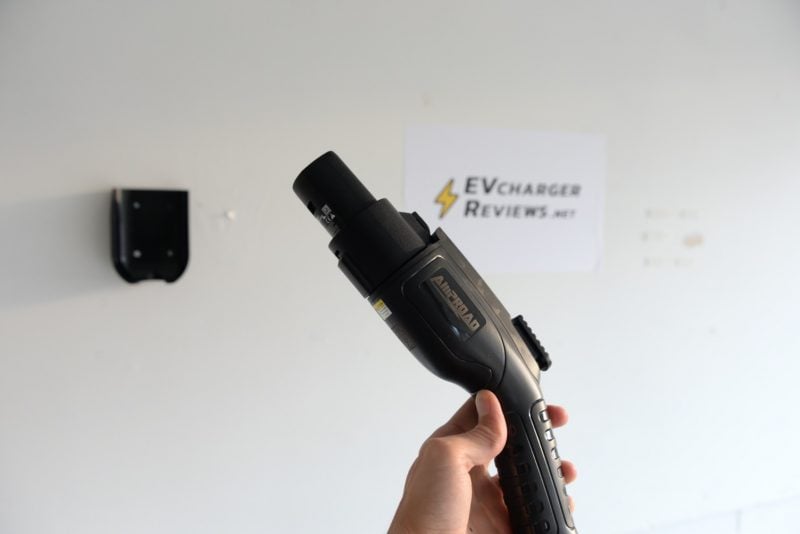
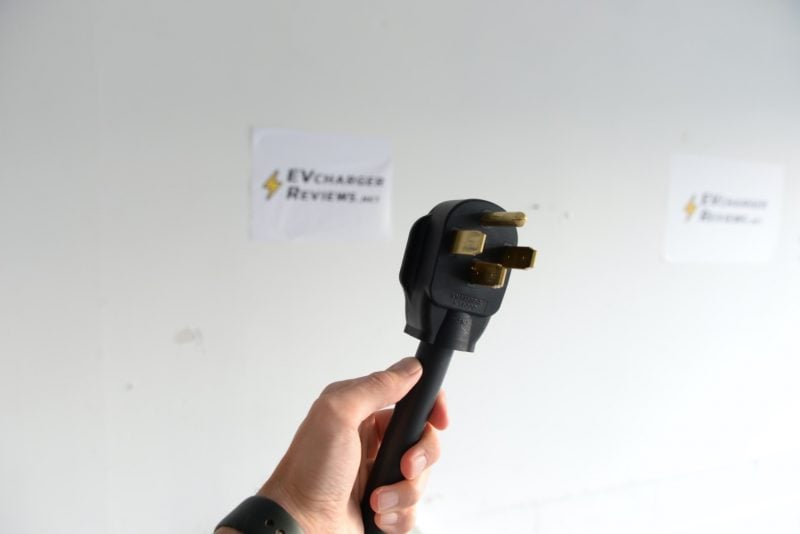
EVchargerReviews.net EVSE Review Methodology
We get the product into our facility, unbox it, inspect it, and install it just like the end user. We have a two-EV car garage with many electric miles accumulating weekly. We take EVSEs through a suite of tests, from short charging sessions, to long overnight charging sessions. We look at whether the claimed features work as expected. We check performance under challenging conditions; does the cord hold up to cold weather? Does the charging station throttle down amps due to heat and thermals? Does the Wi-Fi or Bluetooth drop the connection? Software bugs and glitches will surface during longer-term testing rather than a one-day trial. Measurements are taken on cord thickness and performance, and a thermal camera is used to look for surface hot spots after a 50 kWh stress test.
After living with the charging station product for at least two weeks, we are able to determine how the product compares to rivals, and if it deserves to be recommended to our readers.
Disclosure: Independent review by Michael Kim from EVchargerReviews.net. Our review unit was borrowed from the manufacturer for the duration of the test. We were not provided compensation, special treatment, or specific instruction. We participate in affiliate programs, and we may earn income when you use our links. We hope you think that is fair, based on the amount of work that goes into our reviews.
Considering buying a Tesla? Use our referral link to get $1,000 off, and help support our content.
